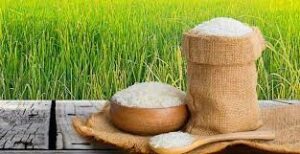Published on: September 2, 2023
Rice Export
Rice Export
Why in news? According to a notification by Directorate General of Foreign Trade, India permitted exports of limited quantities of non-basmati white rice to Bhutan, Mauritius and Singapore
Highlights:
- The export is done through National Cooperative Exports Ltd, a government export body set up under the Multi-State Cooperative Societies (MSCS) Act, 2002 to export agriculture produce and allied items.
- With the monsoon deficient in the country Indian government agreed to allow export to the needy countries totally on humanitarian ground
- Indian farmers plant paddy rice twice in a year. Summer-sown crop planting starting in June accounts for more than 80% of the total output, in winter months, paddy rice is mainly cultivated in central and southern states.
Rice export Ban
- Recently, to check domestic rice prices and ensure domestic food security, the Indian government has prohibited the export of white rice, levied a 20% export duty on par-boiled rice and permitted the export of Basmati rice for contracts
- It also curbed the export of broken rice and India decided not to allow the exports of basmati rice below $1,200 per tonne.
Why India banned the export of rice ?
- Heavy rains in the north of the country in recent time triggered floods in key rice growing regions while deficient rains in the south prevented many farmers from planting the crop.
- With global prices rallying on the back of the Russian war in Ukraine, rice prices are up more than 10 percent in India in the past year
- Rice-growing regions in the south also exposed to risks of dry rain as the El Nino weather pattern sweeps through later this year.
- Government aims to stockpile rice buffer requirement in public granaries for its strategic reserve and the Public Distribution System (PDS)
How does ban affect the world economy?
- It will trigger fears of global food inflation with IMF predicting rise of 10-15% in international rice market rice.
- The devaluation of currencies has led to increased import costs for numerous countries, while high inflation has elevated borrowing costs of the trade.
- Sub-Saharan Africa and in the Middle East and North Africa (MENA) region will face food crises and shortage
- Countries like Malaysia and Singapore have been identified as the most vulnerable to the ban’s impact as both depended India for their staple food
Why India is crucial to the global rice trade?
- India accounts for more than 40% of global rice exports, amounts to 55.4 million metric tons in 2022.
- India’s rice shipments in 2022 were more than the combined shipments of the Thailand, Vietnam, Pakistan and the US, the next four big exporters of the grain.
- Over 140 countries are net importers of India non-basmati rice. Benin, Bangladesh, Angola, Cameroon, Djibouti, Guinea, Ivory Coast, Kenya and Nepal, having rice a staple food, are key buyers of non-basmati Indian rice
- Iran, Iraq and Saudi Arabia mainly buy premium basmati rice from India


